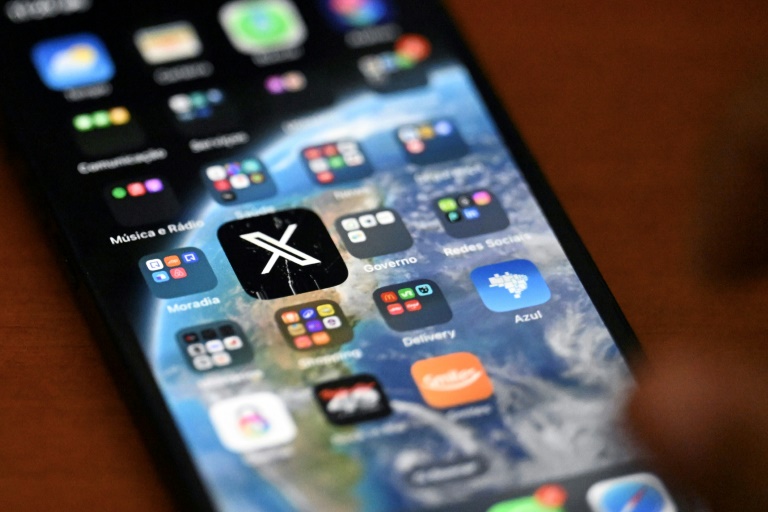With so much content online these days, and a big focus on using phones to access it, there isn’t a lot of focus on good laptops when it comes to things like web browsing. That’s a shame because the bigger screens of laptops mean you get a lot more space to view content and read on; those who often have trouble with smaller letters don’t have to deal with zoomed-in pages on a phone screen. Luckily, there are quite a few options out there when it comes to laptops made for web browsing, and we’ve gone out there and collected some of our favorite picks below. That said, a lot of these laptops are great for productivity and day-to-day tasks as well, so these are all versatile picks that are great for things beyond just browsing the web
The Best Laptops for Browsing the Web in 2024
- Buy the
if you want the best overall laptop for web browsing - Buy the
if you want the best MacBook laptop for web browsing - Buy the
if you want the best thin and light laptop for web browsing - Buy the
if you want the best large-screen laptop for web browsing - Buy the
if you want the best Chromebook for web browsing
Samsung Galaxy Book3 Pro 360
Best overall laptop for browsing the web
| Pros | Cons |
| Spectacular OLED display | Not faster than all 12th-gen Intel machines |
| Solid build quality | Expensive at list price |
| Very thin and light |
Of course, to drive such a big screen and your browsing needs, you’ll need a powerful processor, and the Book 3 Pro 360 comes with an Intel 13th Gen Evo Core i7-1360P, which is a mid-to-high-end CPU that’s more than enough to handle browsing and streaming content. It’s also good enough for things like productivity work and even potentially some casual gaming, so the CPU makes it a very versatile laptop. You’ll also be happy to note that it comes with 16GB of RAM, which is very important for dealing with a lot of open tabs since they tend to eat up RAM, especially if you’re running a heavier browser.
Another important aspect of it is that it’s very thin and lightweight, sitting at just 0.55 inches thick and weighing in at 3.66 pounds; it’s easy to carry around with you, not just when transporting it but also when using it day-to-day. The battery life is also impressive, and you’ll manage about 13 hours or so worth of web browsing, which is a lot for a laptop with this screen resolution and panel. It also works with S Pens and gives you an excellent pen experience, especially since Samsung has a lot of experience with pen-related devices like tablets.
| Specifications | |
|---|---|
| Screen Size |
16-inches |
| Processor | Intel 13th Gen Evo Core i7-1360P |
| RAM | 16 GB DDR5 |
| Storage | 1TB SSD |
| Weight |
3.66 pounds |
M2 MacBook Air 15
Best MacBook laptop for browsing the web
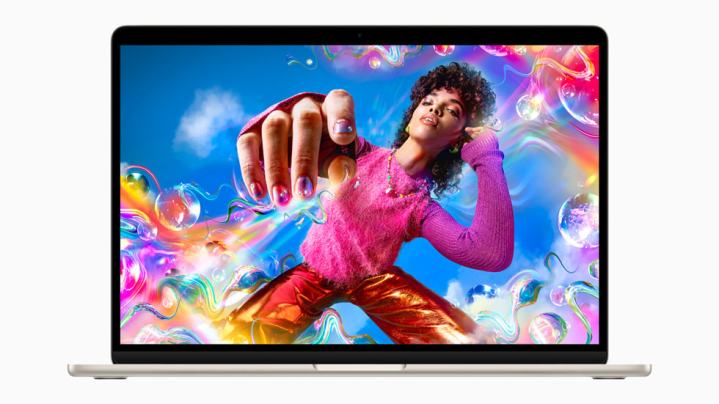
| Pros | Cons |
| Long-lasting battery | Only supports one external display |
| Shockingly thin | |
| Excellent speakers |
While it may be a bit overkill to get a MacBook just for browsing, but if you’re in the Apple ecosystem, then going for the MacBook Air 15 makes a lot of sense. For one thing, it has a larger 15-inch screen compared to the 13-inch MacBook Air, and the only size bigger than that is unique to the MacBook Pro 16, which is several times more expensive. As such, it sits in a good middle-ground for Apple users, while the 2880 x 1864 resolution Retina screen is one of Apple’s best and does an excellent job of image reproduction and fidelity.
Of course, being in the Apple ecosystem also means a more seamless experience between devices, so if you have an iPhone or an iPad, then you can do things like send the web page you’re browsing to your laptop to see it better or write in it. You also get a solid amount of processing power with the M2 Chip that’s under the hood, which is roughly equivalent to a mid-to-high-end CPU from Intel or AMD and should be more than enough to handle your web browsing, streaming, and things like that. It’s worth noting that the M2 is an ARM chip, so it’s combined CPU and GPU, so you could get some casual gaming on there as well, and if you’re a creative type, then you can get some graphical rendering work done as well.
One of the biggest selling points of any MacBook is that it’s not only fanless but incredibly thin at 0.44 inches, making it great for slipping into a bag and carrying it around with you. It also has one of the longest battery lives you’ll find on the market, sitting at around 18 hours when doing light web browsing, which is very impressive. Even better, the configuration we’ve linked below is the one that comes with 16GB, which means you’ll be able to open more tabs and apps before running into any lag or issues. There is an 8GB version, which is a lot cheaper if you want to go that route; just be aware that you’ll have to do more app and tab management with that one.
| Specifications | |
|---|---|
| Screen Size |
15-inches |
| Processor | M2 Chip |
| RAM | 16 GB DDR5 |
| Storage | 512 GB |
| Weight |
3.3 pounds |
Microsoft Surface Laptop 5
Best thin and light laptop for browsing the web
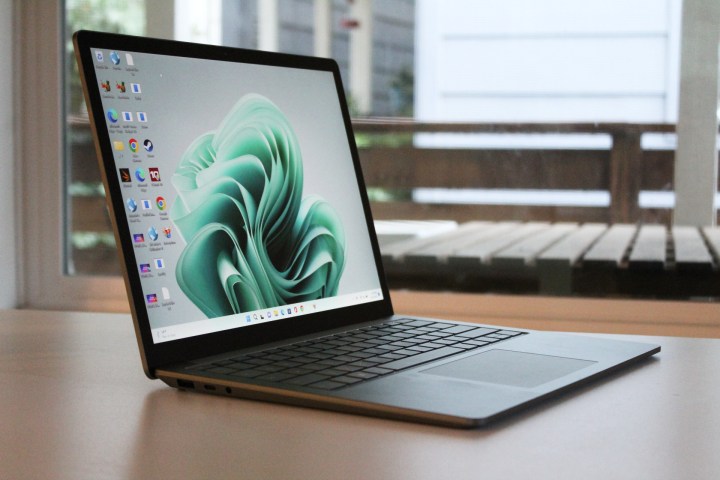
| Pros | Cons |
| Still thin and light | Limited performance gains |
| Thunderbolt 4 | No more AMD options |
| Upgradable storage |
Microsft not only makes Windows 11 but also dabbles in laptops, including this Microsoft Surface Laptop 5, which is a surprisingly good laptop if you’re looking for something thin and light that could compete in size with a MacBook. It has a similar 15-inch touchscreen and runs a similar 2496 x 1664 resolution while being able to hit an impressive 400 nits of peak brightness, so it’s actually the perfect alternative to a MacBook Air if you don’t want to be in the Apple ecosystem. It’s also worth noting that while Microsft doesn’t have the same ecosystem as Apple or Samsung, it does have one in the form of Office and Xbox Game Pass, so if you want something that’s made specifically by Microsoft, this is the way to go.
As for power, the Surface Laptop 5 runs an Intel Core i7 Evo Platform, which is a mid-to-high-end CPU and more than capable of handling browsing and streaming. Much like the other devices on the list, it can do a pretty good job handling productivity and other day-to-day tasks; with its small and thin weight—just 0.58 inches thick—it’s an excellent day-to-day companion. That said, one downside is that it is quite pricey for the 16GB RAM version, almost as much as the MacBook, if not more, so that’s certainly something to consider. There is an 8GB version, but again, that’s not a lot, especially with Windows 11 eating up quite a chunky portion of RAM just to run.
When it comes to battery life, you can expect roughly eight to ten hours out of it, depending on your usage, which isn’t that great, admittedly, when compared to some other options on the list, especially for the price. Interestingly, a big reason for that is likely that it doesn’t have an AMD option, which tends to be more efficient. Even so, unless you’re worried about not having access to an outlet to charge while browsing, this shouldn’t be an issue in the long run.
| Specifications | |
|---|---|
| Screen Size |
15-inches |
| Processor | Intel Core i7 Evo Platform |
| RAM | 8GB DDR5 |
| Storage | 512 GB |
| Weight |
3.44 pounds |
LG gram 17
Best large-screen laptop for browsing the web

| Pros | Cons |
| Exceptionally light | Feels a little flimsy |
| Excellent display | Expensive |
| Very good keyboard and touchpad | Only has an RTX 4050 |
If having the biggest screen you can get is at the top of your priorities, then the LG Gram 17 is one of the best options, if not the best. True, there are larger screens around 18 inches, but pretty much all of those are on gaming laptops and will cost twice as much as the Gram 17 would. There is also the fact that gaming laptops are bulky to account for high-end gaming GPUs, while the Gram 17 is just 0.66 inches thick and weighs an incredibly low 2.64 pounds, so it’s very easy to carry around.
As for the screen itself, as we mentioned, it sits at 17 inches and runs a 2560 x 1600 resolution, so it’s perfect for browsing and watching content online. It can also hit 350 nits of peak brightness, which should be enough to deal with most lighting except direct sunlight, although we probably wouldn’t take it out to the park on a bright day. While it is an IPS panel that has great viewing angles, it sadly isn’t touch-enabled, which would have made it perfect, but at least it does cover 99% of the DCI-P3 color gamut, so color reproduction is excellent.
Under the hood, it runs an Intel Core i7-1360P, which is a pretty excellent GPU for browsing and general day-to-day and productivity tasks. You’ll also be happy to know that it comes with 16GB of RAM, so you can open tabs to your heart’s content. We should mention that there is a version of the
for those who want access to casual gaming and better graphical rendering, and one that has
. Of course, both of these are considerably more expensive, but they are worth considering if you want that extra versatility that more RAM or a GPU can offer.
| Specifications | |
|---|---|
| Screen Size |
17-inches |
| Processor | Intel Core i7 Evo |
| RAM | 16 GB DDR5 |
| Storage | 1 TB |
| Weight |
2.64 pounds |
ASUS 2-in-1 Touchscreen Chromebook
Best Chromebook for browsing the web
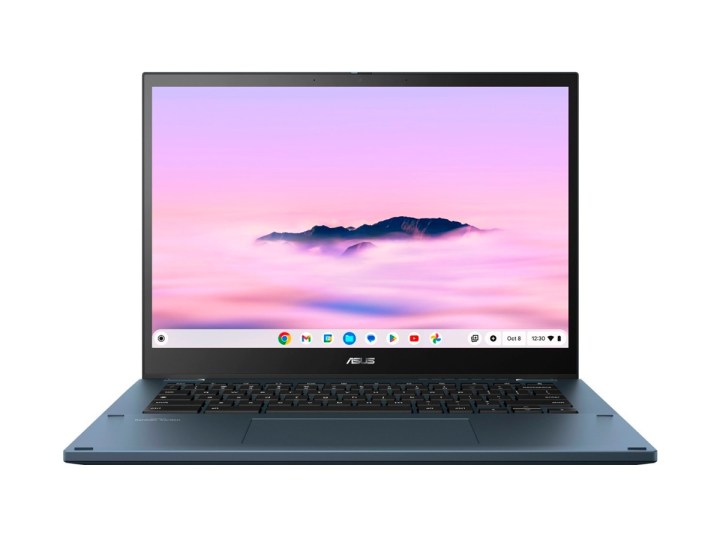
| Pros | Cons |
| Excellent value | Feels a bit flimsy |
| Surprisingly solid performance | Only has 8GB of RAM |
| Comes with a touchscreen display |
Not every laptop good for browsing has to be really expensive, and if you’re not that tied down to Windows, then a Chromebook like this ASUS 2-in-1 Touchscreen Chromebook is a great alternative. For starters, the 8GB of RAM isn’t as big of a deal compared to Windows laptops because Chromebooks run on ChromeOS, which is a much leaner operating system, so you aren’t losing as much of your RAM to keep the OS going. That said, it is a bit frustrating that there isn’t a 16GB option, but the reality is that Chromebooks aren’t made for performance; they’re made for streaming and accessing content online.
That’s evident from the fact that the processor it has is an Intel Core i3-1215U, which is an entry-level processor and would usually be a problem, but with ChromeOS, it’s perfectly fine. While it may somewhat impact performance, you’ll still manage to run tabs and do day-to-day and productivity work just fine. Similarly, while you only get 128GB of storage, meaning you won’t really be able to save shows or films locally, you can always extend the storage using one of these external hard drive deals or rely more heavily on cloud storage.
As for the screen, it’s 16 inches, so you have a lot of real estate for web browsing, and it runs a 1920 x 1200 resolution, which is a bit on the lower end for a 16-inch screen, but certainly not a dealbreaker. What’s great is that the screen is touch-enabled, a feature that’s great for web browsing and means that you don’t have to rely on the touchpad. You’ll also be happy to know that you’ll get around about 10 hours of battery life out of it, which should last you the whole day.
| Specifications | |
|---|---|
| Screen Size |
16-inches |
| Processor | Intel Core i3-1215U |
| RAM | 8 GB DDR5 |
| Storage | 128 GB |
| Weight |
4.77 pounds |
How We Chose These Laptops for Browsing the Web
Screen
Web browsing is all about having a lot of screen space, especially if you’re the type of person who likes to read online or watch content. After all, it can be really frustrating to view content on a small screen that doesn’t have a good resolution or image quality. That’s why we primarily focused on laptops that have larger screens, at least 15 inches and above, and we did our best to aim for screens that are higher quality and may have things like OLED panels or, in the case of the MacBook, a retina display. In a similar vein, we aimed for screens that run an IPS panel since they have better viewing angles that also help if you’re browsing or watching something with somebody else.
We also tried to include some options that are touchscreen-enabled since some folks may prefer browsing online that way rather than using a touchpad.
RAM
It may not be immediately obvious, but RAM plays a big part in web browsing because each individual tab that you open tends to take up some amount of RAM. And, if we’re anything to go by, we often have a dozen or more tabs open, whether it’s stuff we want to read later, something we’re referencing, or just a tab we opened and completely forgot about. Either way, having a solid amount of RAM is important for a smooth web browsing experience, so we picked laptops that had at least 8GB of RAM and did our best to aim for the ideal 16GB of RAM.
The only real exception to this rule is Chromebooks, not because tabs don’t take RAM there too, they do, but because ChromeOS is a lot more lightweight compared to Windows, which can often take 2-4 GB of RAM just for itself. That means that if you have 8GB of RAM and are running Windows, then you really only have about 4-6GB to use, which isn’t a lot with most modern apps and browsers.
Processor
The truth is that processors don’t play a huge part in whether a laptop is good for web browsing since the reliance is more on RAM than CPU. Even so, it’s good to have at least a mid-tier CPU under the hood, if only to give the laptop a bit more versatility in terms of productivity and other day-to-day tasks. As such, almost all our picks have a mid-tier Intel i5 or Ryzen R6 and better, with the only exception being the Chromebook which, again, doesn’t need as much processing power as a Windows laptop, so it’s ok to go with a more entry-level Intel i3.
Battery Life
You might be surprised to find out that something as simple as browsing can take up a surprising amount of battery life, especially if you’ve increased the brightness of the screen to the maximum. Not only that but watching content online is actually easier on the battery than constantly browsing and going back and forth between web pages and tabs. Luckily, most modern non-gaming laptops have a pretty good battery life, so we’ve aimed for laptops that will see at least seven to eight hours of use, at minimum, with web browsing, with some options going up to double that. Ultimately, though, you’ll most likely have access to some form of power or power outlet, and there are some portable power stations you could potentially use as well, so don’t avoid a laptop just because it doesn’t have the best battery life.
This article is managed and created separately from the Digital Trends Editorial team.
Editors’ Recommendations

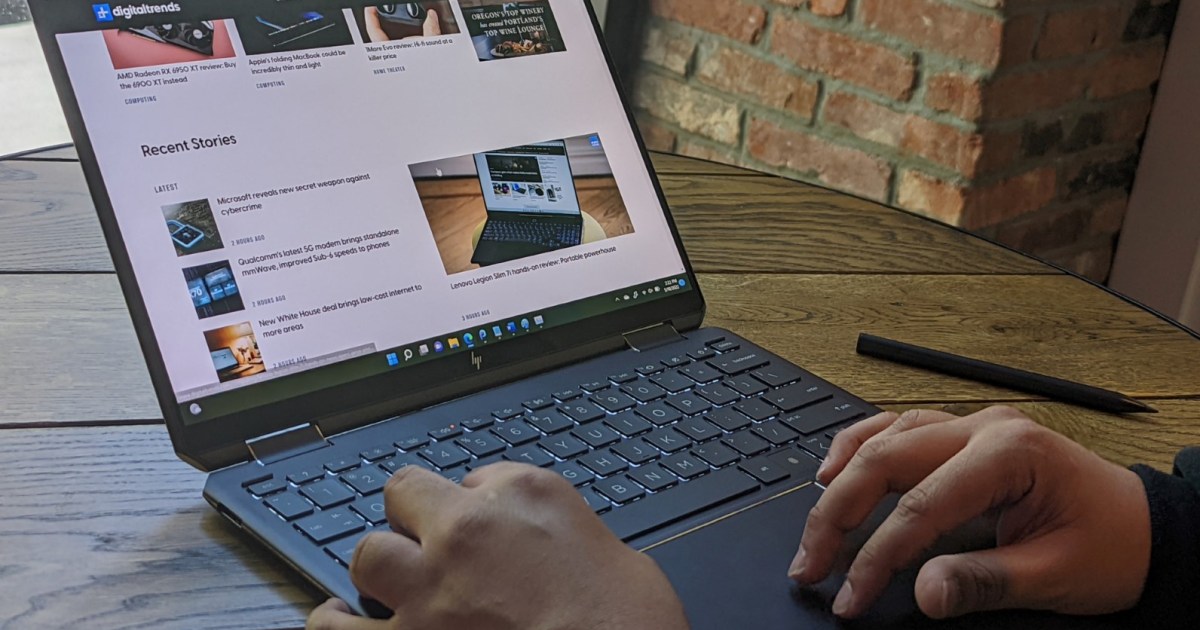
)



